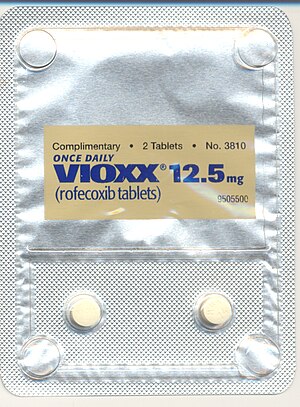
- Image via Wikipedia
According to the magazine The Scientist, the publishing giant Elseiver admitted to publishing six fake medical journals between 2000 and 2005.
These “journals” were all sponsored by pharmaceutical companies but lacked proper disclosure of sponsorship. The initial finding, released on April 30 in The Scientist, involved the Australasian Journal of Bone and Joint Medicine, a publication which was paid for by Merck. The publication, complete with an honorary editorial board of academics, was largely a compendium of reprinted articles and reviews from other Elsevier journals that presented data favorable to Merck’s products. All six publications were released in Australia.
Michael Hansen, CEO Of Elsevier’s Health Sciences Division, responded quickly on the company’s website with an apology and reassurance that the practice has ceased, the individuals involved have since left the company, and that the integrity of the publishing process at Elsevier remains intact. Hansen writes:
We have strict disclosure rules in place so that readers are aware of any financial interests behind a specific article or journal, or when entire compilation products are created for pharmaceutical marketing purposes.
However, it’s unlikely that everyone involved has left the company, despite Elsevier’s assurances. Elsevier’s Asia-Pacific region was run at the time by an executive known to have approved all business decisions, exerting tight control over operations.
Despite the intrigue, a more fundamental question exists: Why would this happen? Among the developed countries, only the United States and New Zealand allow direct-to-consumer advertising of prescription drugs. Perhaps this is part of the rationale for the journal format. The conspicuous lack of sponsorship along with the staid academic journal format appears intentional for the purposes of creating a semblance of an objective source of medical information.
Following the lawsuit over the drug Vioxx, an article appearing last year in the Journal of the American Medical Association revealed that Merck routinely prepared journal manuscripts for publication and subsequently recruited academically affiliated researchers to be the authors (dropping the company scientists in the process). In half of the manuscripts, industry affiliation or support was not disclosed on the manuscripts.
The fake publishing ordeal may have been a lucrative opportunity for Elsevier at the time. Right now, they appear to be paying the price.
Discussion
12 Thoughts on "Elsevier Published Fake Journals"
Interesting that the The International Committee of Medical Journal Editors (ICMJE) doesn’t address this topic in its recommendations. It speaks at length about what authors need to do about reporting conflicts of interest. It is limited in the responsibilities of the publishers.
http://www.icmje.org/index.html
The section about advertising (III.H. Advertising) is fairly explicit about a “chinese wall” between content and advertising. In this case, they did a poor job of segmenting the two. How can one separate the ads from the content when the content ARE the ads?
Todd
![Reblog this post [with Zemanta]](http://img.zemanta.com/reblog_e.png?x-id=091b3221-fefc-4f8e-bdb9-2513f6879077)


